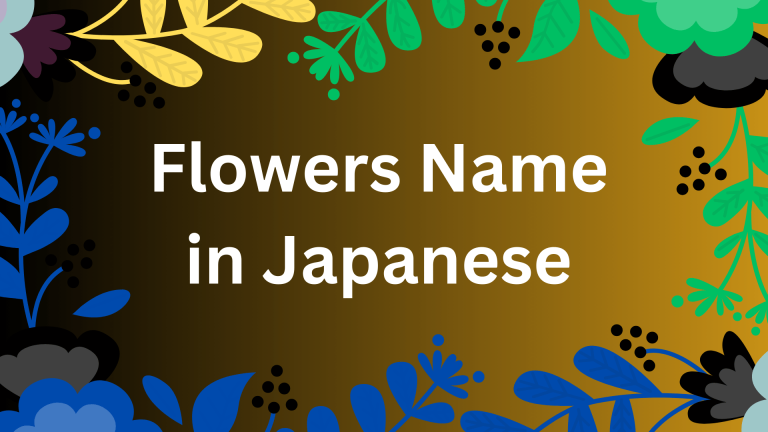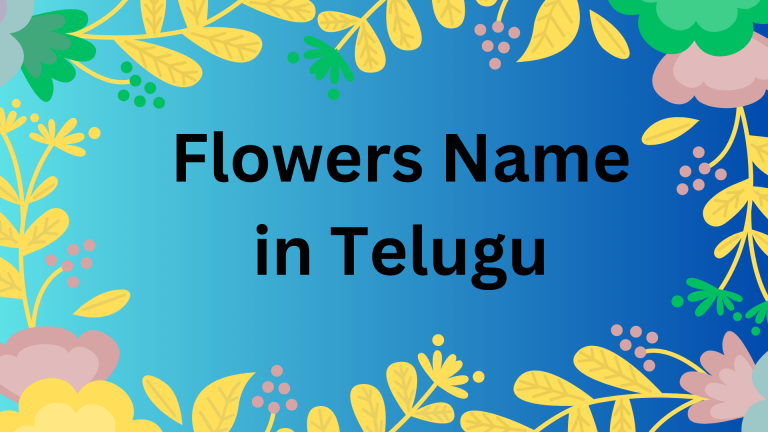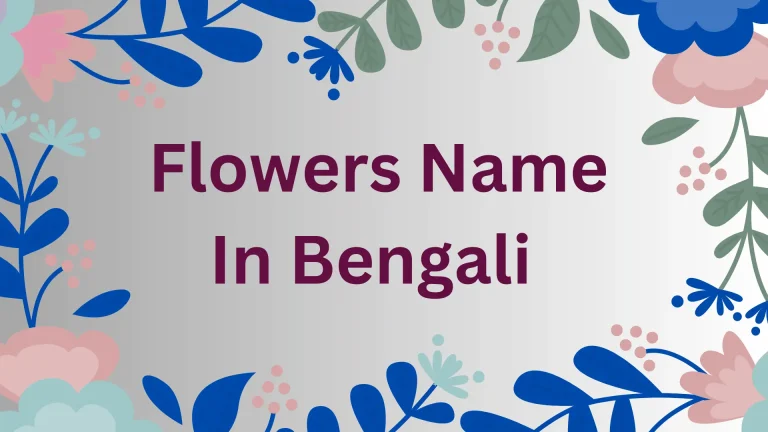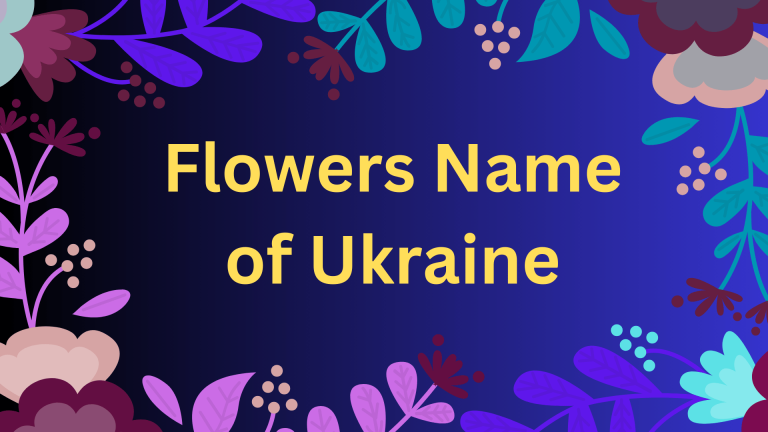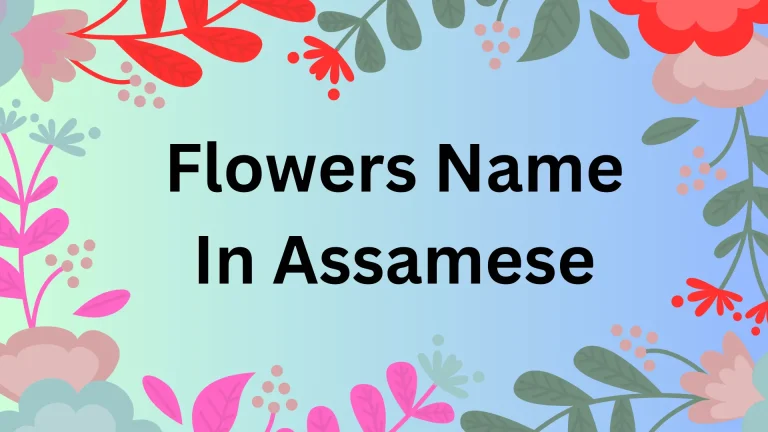100 Flower names in Sanskrit, English and Hindi With Pictures
Are you curious about learning flower names in Sanskrit? If so, this article is a perfect resource for you. While most people are familiar with flower names in English and Hindi, discovering them in Sanskrit opens a window into India’s rich linguistic and cultural heritage.
Sanskrit is one of the oldest and most revered languages in the world, with a history spanning over 3,000 years. It is known for its precision, depth, and spiritual significance. The legendary scholar Panini, a renowned grammarian and philologist, is considered the father of Sanskrit grammar. Today, more than 2 million people still speak or study Sanskrit, keeping this classical language alive despite its limited use in daily conversation.
In this article, we’ll explore the names of 100 flowers in Sanskrit, Hindi, and English, complete with pictures to make learning engaging and visually appealing. From the graceful lotus (पद्मम् – Padmam) to the fragrant jasmine (जातीपुष्पम् – Jātīpuṣpam), each flower carries its own meaning and cultural significance.
In this blog, we have prepared a list of flowers names for you in English, Hindi and Sanskrit language.
10 Flower names in Sanskrit
| S.No | Pictures | Flower Name (English) | Flower Name (Hindi) | Flower Name (Sanskrit) |
|---|---|---|---|---|
| 1 |  | Rose | गुलाब | पाटल (Pāṭala) |
| 2 | 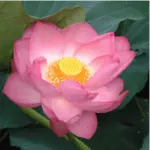 | Lotus | कमल | पद्म (Padma) |
| 3 | 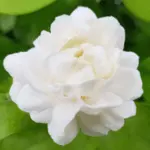 | Jasmeen | चमेली | जपाकुसुम (Japākusuma) |
| 4 |  | Sunflower | सूरजमुखी | आदित्यभक्त (Ādityabhakta) |
| 5 | 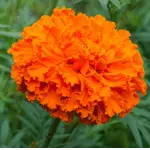 | Marigold | गेंदा | सद्मालिका (Sadmālikā) |
| 6 | 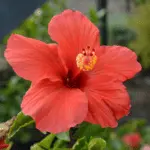 | Hibiscus | गुड़हल | जपाकुसुम (Japākusuma) |
| 7 | 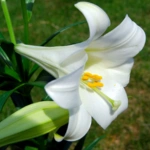 | Lily | कुमुदिनी | ससय (Sasaya) |
| 8 | 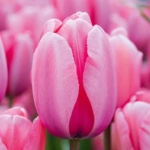 | Tulip | कन्द पुष्प | कैतकी (Kaitakī) |
| 9 | 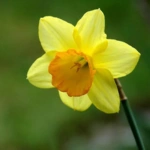 | Daffodil | नरगिस | केतकी (Ketakī) |
| 10 | 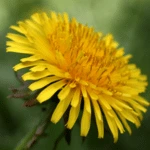 | Dandelion | सिंहपर्णी | काकतुण्डी (Kākatunḍī) |
The Cultural Importance of Flowers in India
Flowers hold a deep spiritual and cultural significance in India. Take the water lily, for example—widely regarded as a symbol of purity and beauty. Floating gracefully in ponds and lakes, this flower is often seen in religious art and temple imagery, especially in depictions of deities. In Sanskrit, the water lily is called “Utpal”, and its serene presence reflects the tranquility and divine essence of Indian tradition.
Another flower with cultural depth is the daisy, known in Sanskrit as “Prastarini”. It represents simplicity and innocence, qualities that resonate with the values of humility and purity in Indian philosophy. These flowers are not just admired for their beauty—they are woven into the rituals, stories, and symbols that define Indian heritage.
From festivals to daily worship, flowers continue to play a vital role in expressing emotion, devotion, and identity. Their presence in Indian tradition is timeless, reminding us of the delicate yet powerful connection between nature and spirituality.
30 Flower names in Sanskrit
| S.No | Pictures | Flower Name (English) | Flower Name (Hindi) | Flower Name (Sanskrit) |
| 11 |  | Poppy | खसखस | खसखस (KhasKhas) |
| 12 | 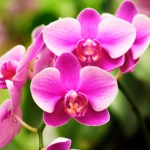 | Orchid | ऑर्किड | वन्दना (Vandanā) |
| 13 | 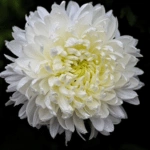 | Chrysanthemum | चंद्रमल्लिका | शीर्णपुष्प (Śīrṇapuṣpa) |
| 14 | 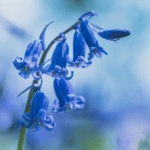 | Bluebell | नील घंटी | भृंगराज (Bhṛṅgarāja) |
| 15 | 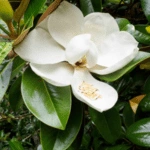 | Magnolia | चंपा | चंपक (Campaka) |
| 16 | 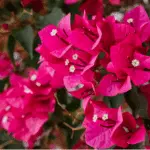 | Bougainvillea | बोगनवेलिया | बूगनविल्या (Būganvilyā) |
| 17 | 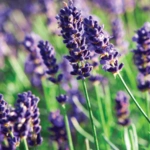 | Lavender | लैवेंडर | उशीर (Uśīra) |
| 18 | 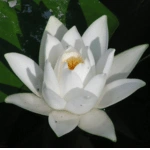 | Water Lily | जल कुमुदिनी | उत्पल (Utpal) |
| 19 | 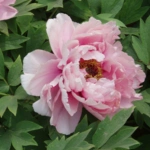 | Peony | पीओनी | अशोक (Aśoka) |
| 20 | 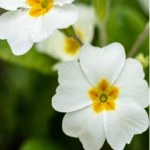 | Primrose | बसंती गुलाब | रक्तपुष्प (Raktapuṣpa) |
| 21 | 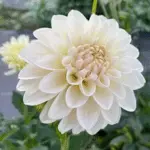 | Dahlia | डेहलिया | दालिया (Dāliya) |
| 22 | 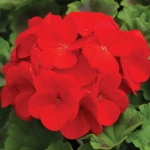 | Geranium | गेरियम | सौवीरक (Sauvīraka) |
| 23 | 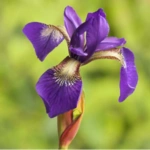 | Iris | आईरिस | शूकरकर्णिका (Śūkarakarṇikā) |
| 24 | 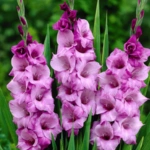 | Gladiolus | ग्लेडियोलस | स्फटिकपुष्प (Sphatika-Puṣpa) |
| 25 | 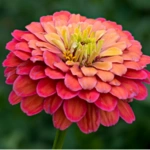 | Zinnia | ज़ीनिया | सुरस (Surasa) |
| 26 | 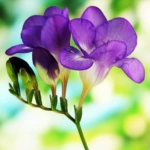 | Freesia | फ़्रीसिया | दार्जिलिंगपुष्प (Dārjilingapuṣpa) |
| 27 | 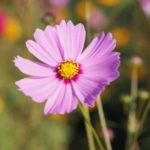 | Cosmos | कॉसमॉस | विश्वकुसुम (Viśvakusuma) |
| 28 | 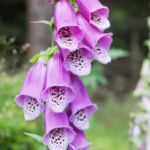 | Foxglove | फॉक्सग्लव | काकचुट्टी (Kākacūṭṭī) |
| 29 | 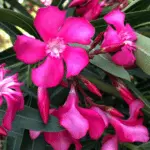 | Oleander | कनेर | कर्णिकार (Karṇikāra) |
| 30 | 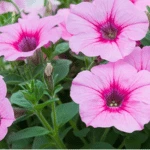 | Petunia | पिटुनिया | सुवासिक (Suvasika) |
60 Flower names in Sanskrit
| S.No | Pictures | Flower Name (English) | Flower Name (Hindi) | Flower Name (Sanskrit) |
|---|---|---|---|---|
| 31 | 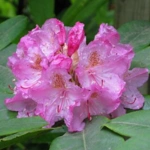 | Rhododendron | बुरांश | बकुल (Bakula) |
| 32 | 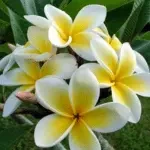 | Champa (Plumeria) | चंपा | चम्पा (Champā) |
| 33 | 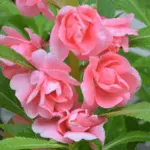 | Balsam | गुल मेहंदी | कुशुम (Kuśuma) |
| 34 | 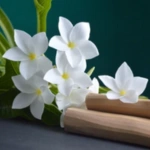 | Sandal | चंदन | चन्दन (Chandana) |
| 35 | 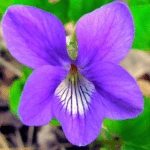 | Violet | बैंगनी | बनश्री (Banashrī) |
| 36 | 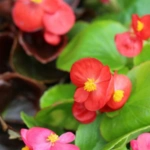 | Begonia | बेगोनिया | तामरपर्णी (Tāmaraparṇī) |
| 37 | 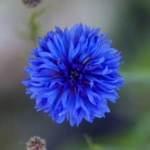 | Cornflower | नीला फूल | यवन्तिका (Yavantikā) |
| 38 | 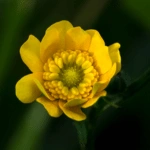 | Buttercup | रत्नज्योति | कुमुदिनी (Kumudinī) |
| 39 | 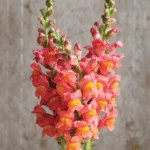 | Snapdragon | स्नैपड्रैगन | मुखपर्ण (Mukhaparṇa) |
| 40 |  | Anemone | एनिमोन | वनशुक (Vanaśuka) |
| 41 | 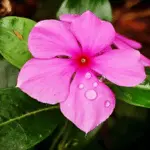 | Periwinkle (Sadabahar) | सदाबहार | नित्यश्री (Nityaśrī) |
| 42 | 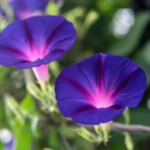 | Morning Glory | प्रातः लता | कल्पलता (Kalpalatā) |
| 43 | 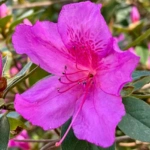 | Azalea | अज़लिया | कर्णिकार (Karṇikāra) |
| 44 | 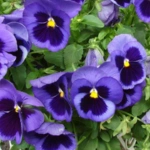 | Pansy | बनफूल | गोरखमुण्डी (Gorakhamuṇḍī) |
| 45 | 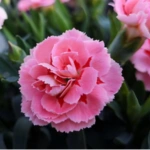 | Carnation | कार्नेशन | देवकुसुम (Devakusuma) |
| 46 | 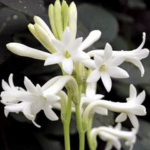 | Tuberose | रजनीगंधा | सुगन्धराज (Sugandharāja) |
| 47 | 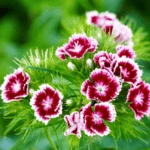 | Sweet William | स्वीट विलियम | गुलैनार (Gulaināra) |
| 48 | 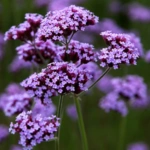 | Verbena | वर्बेना | निरांजन (Nirāñjana) |
| 49 | 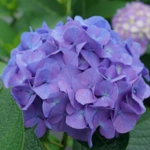 | Hydrangea | हाइड्रेंजिया | ह्यड्रेंज (Hyḍrenja) |
| 50 | 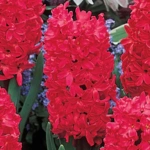 | Hyacinth | हायसिंथ | कुसुमाकर (Kusumākar) |
| 51 | 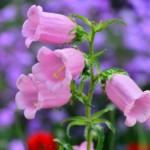 | Bellflower | घंटी पुष्प | ककुब (Kakuba) |
| 52 | 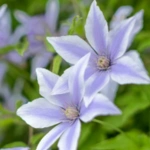 | Clematis | अकंलता | आपगा (Āpaga) |
| 53 | 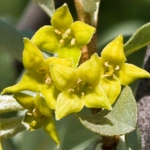 | Oleaster | ओलिस्टर | क्षीरमूल (Kṣīramūla) |
| 54 | 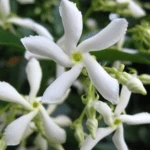 | Star Jasmine | कुंद पुष्प | कुतज (Kutaja) |
| 55 | 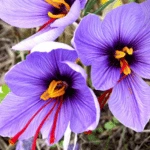 | Saffron | केसर | कुमकुम (Kumkuma) |
| 56 | 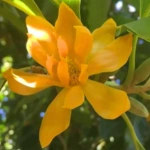 | Golden Champa | सोन चंपा | हेमपुष्प (Hemapuṣpa) |
| 57 | 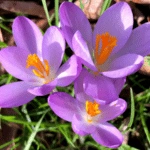 | Crocus | क्रोकस | नागपुष्प (Nāgapuṣpa) |
| 58 | 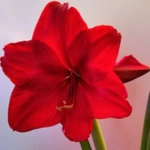 | Amaryllis | अमरिलिस | लतिका (Latikā) |
| 59 | 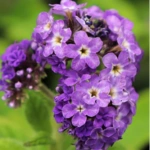 | Heliotrope | हीलियोट्रोप | सुरसार (Surasāra) |
| 60 | 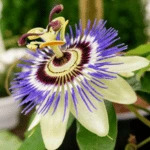 | Passionflower | कृष्णकमल | शंखपुष्प (Śaṅkhapuṣpa) |
| 61 | 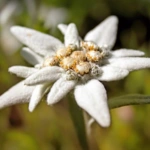 | Edelweiss | एडेलवाइस | अश्मवद (Aśmavada) |
| 62 | 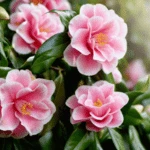 | Camellia | कैमेलिया | कपोतिका (Kapotikā) |
| 63 | 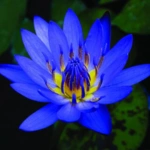 | Blue Lotus | नील कमल | उत्पल (Utpal) |
| 64 | 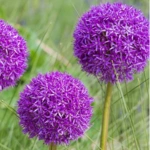 | Allium | प्याज के फूल | रसालपुष्प (Rasālapuṣpa) |
| 65 | 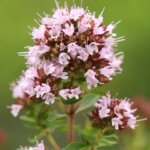 | Marjoram | मरुआ | मरुबक (Marubaka) |
| 66 | 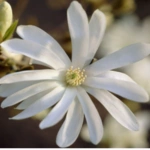 | Star Magnolia | सितारा चंपा | नागकेसर (Nāgakesara) |
| 67 | 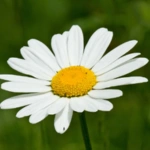 | Daisy | गुलदावुदी | डेज़ी (Dezī) |
| 68 | 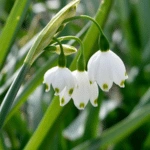 | Snowflake | बर्फीला पुष्प | हिमज्योत्स्ना (Himajyotsnā) |
| 69 |  | Red Poppy | लाल खसखस | रक्तपुष्प (Raktapuṣpa) |
| 70 | 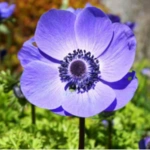 | Wood Anemone | वुड एनिमोन | वनकुसुम (Vanakusuma) |
| 71 |  | Calendula | गेंदा पुष्प | सुदीप्त (Sudīpta) |
| 72 | 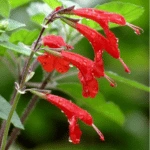 | Scarlet Sage | लाल सेज | रुधिरसार (Rudhirasāra) |
| 73 | 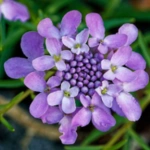 | Candytuft | कैंडीटफ्ट | इक्षुमाला (Ikṣumālā) |
| 74 | 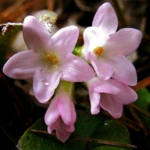 | Mayflower | मई का फूल | माधवी (Mādhavī) |
| 75 | 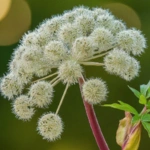 | Angelica | अंजलिका | अम्बोलिका (Ambolikā) |
| 76 | 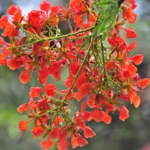 | Delonix Regia | गुलमोहर | पारिजात (Pārijāta) |
| 77 | 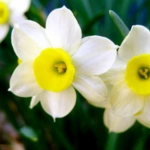 | Narcissus | नर्किसस | नर्किसस् (Narkisas) |
| 78 | 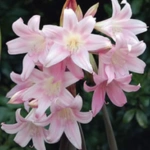 | Belladonna Lily | बेलाडोना लिली | श्वेतार्क (Śvetārka) |
| 79 |  | Dutch Iris | डच आईरिस | शिरोविलास (Śirovilāsa) |
| 80 | 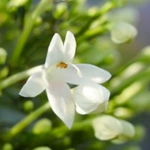 | Indian Cork Tree Flower | नीम चमेली | सप्तपर्णी (Saptaparṇī) |
| 81 | 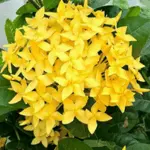 | Ixora | रुग्मिनी | पारिजात (Pārijāta) |
| 82 | 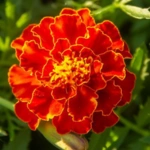 | Mexican Marigold | मैक्सिकन गेंदा | सुवर्ण (Suvarṇa) |
| 83 | 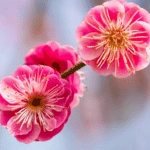 | Plum Blossom | आलूबुखारा का फूल | प्रचेतस (Pracetas) |
| 84 | 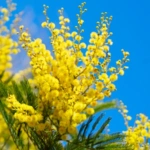 | Mimosa Flower | मिमोसा | शिरीष (Śirīṣa) |
| 85 | 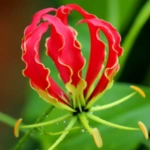 | Flame Lily | आग लिली | अग्निशिखा (Agniśikhā) |
| 86 | 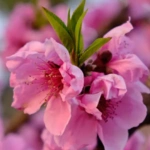 | Peach Blossom | आड़ू का फूल | बिम्बा (Bimbā) |
| 87 | 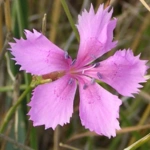 | Clove Pink | लौंग गुलाबी | वातिकपुष्प (Vātikapuṣpa) |
| 88 | 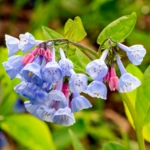 | Virginia Bluebell | वर्जीनिया नीला घंटी | महाविशाल (Mahāviśāla) |
| 89 | 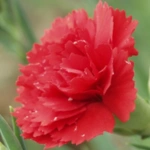 | Scarlet Carnation | लाल कार्नेशन | रक्तजपा (Raktajapā) |
| 90 | 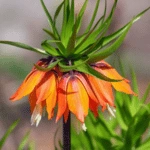 | Crown Imperial | क्राउन इंपीरियल | शिरोगंड (Śiroganda) |
| 91 | 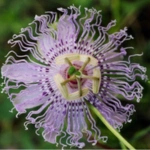 | Passion Fruit Flower | कृष्णफल का फूल | द्राक्षपुष्प (Drākṣapuṣpa) |
| 92 | 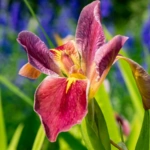 | Japanese Iris | जापानी आईरिस | जापाक्षी (Jāpākṣī) |
| 93 |  | Freesia | फ़्रीसिया | फ्रिजिया (Frijiya) |
| 94 | 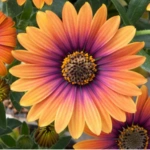 | African Daisy | अफ्रीकी डेज़ी | उषःपुष्प (Uṣahpuṣpa) |
| 95 | 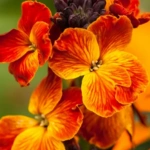 | Wallflower | वॉलफ्लावर | कल्याणी (Kalyāṇī) |
| 96 |  | Bougainvillea | बोगनवेलिया | भूगनविल्या (Bhūganvilyā) |
| 97 | 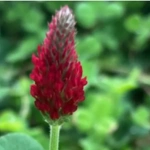 | Crimson Clover | गहरा लाल तिपतिया घास | रक्तत्रिण (Raktatriṇa) |
| 98 | 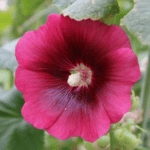 | Hollyhock | गुलखैरा | कशेरुक (Kaśeruka) |
| 99 | 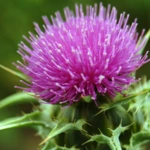 | Thistle | थिसल | दुर्विदा (Durvida) |
| 100 |  | Blue Hibiscus | नीला गुड़हल | नीलजपा (Nīlajapā) |
Conclusion
We’ve explored the names of flowers in Sanskrit, along with their meanings and cultural significance. For example, the red rose, known as Pāṭala, symbolizes love; the bright yellow sunflower, called Ādityabhakta, represents positivity; and the colorful daffodil, known as Ketakī (केतकी), signifies a new beginning.
Sanskrit is a timeless language with a rich and fascinating history. Learning flower names in Sanskrit not only deepens your understanding of nature but also connects you to India’s ancient wisdom and traditions. Impress your family and friends with your knowledge, and if you enjoyed this blog, don’t forget to share it with others who appreciate language, culture, and the beauty of flowers.
FAQ Questions
Q. Write five flowers name in English and Sanskrit languages?
A.1.Rose: पाटल Pāṭala) 2. Sunflower: आदित्यभक्त (Ādityabhakta) 3. Tulip: कैतकी (Kaitakī)
4. Peony: अशोक (Aśoka) 5. Jasmine: जपाकुसुम (Japākusuma).
Q. Which country is largest speakers in Sanskrit?
A. India is the largest speakers in Sanskrit.
Q. Write sunflower name in Hindi and translate into Sanskrit?
A. Hindi name (सूरजमुखी) and Sanskrit name आदित्यभक्त (Ādityabhakta).
Q. Does Sanskrit have any relation with Indian history and culture?
A.. Sanskrit language is an ancient language of about 3000 years and its founder was a great Indian scholar, religious and philosophical person.
Q. सुदीप्त (Sudīpta) is the sanskrit name of Angelica flower?
A. No, it’s not सुदीप्त (Sudīpta) is the sanskrit name of calendula and Anglica sanskrit name
is अम्बोलिका (Ambolikā).
Q. Which flower is the queen of the garden?
A. Rose flower is the queen of the garden.
Q. What is the name Blue Lotus in Sanskrit?
A. उत्पल (Utpal) is the name of blue lotus in Sanskrit.
Q. What is the Sanskrit name of Dahlia and Lavender?
A. दालिया (Dāliya) Sanskrit name of Dahlia and उशीर (Uśīra) Sanskrit name of Lavender.

